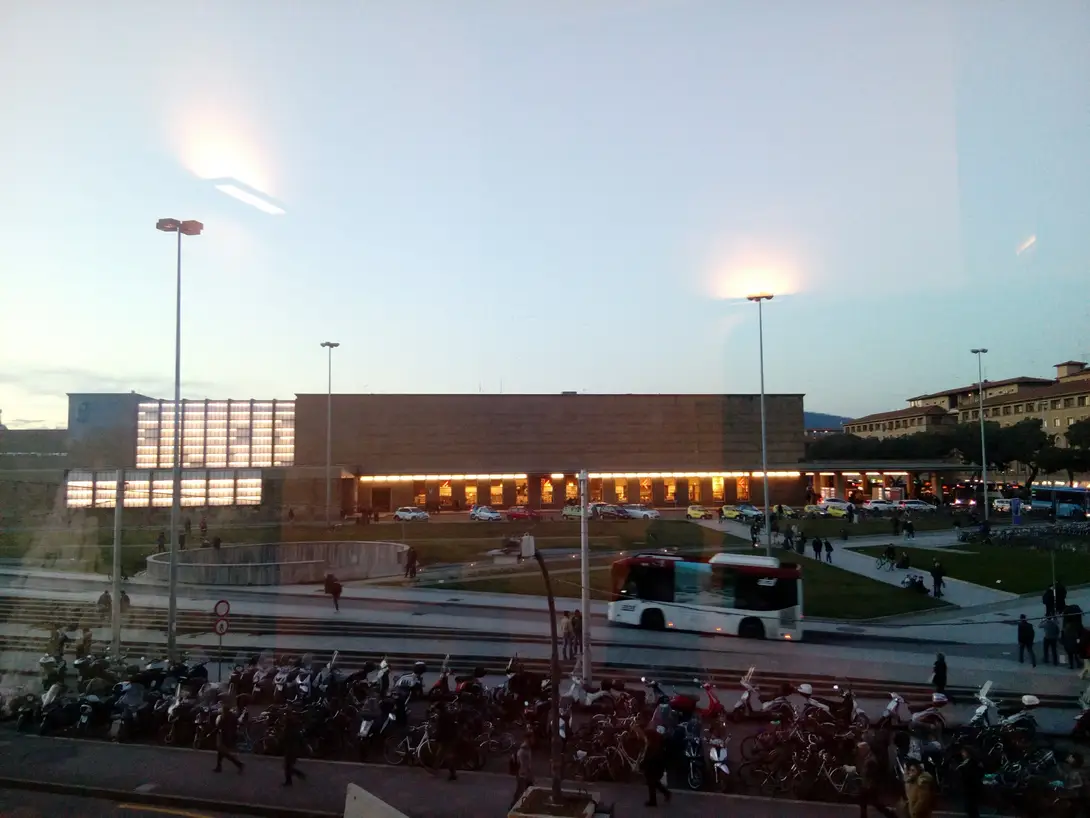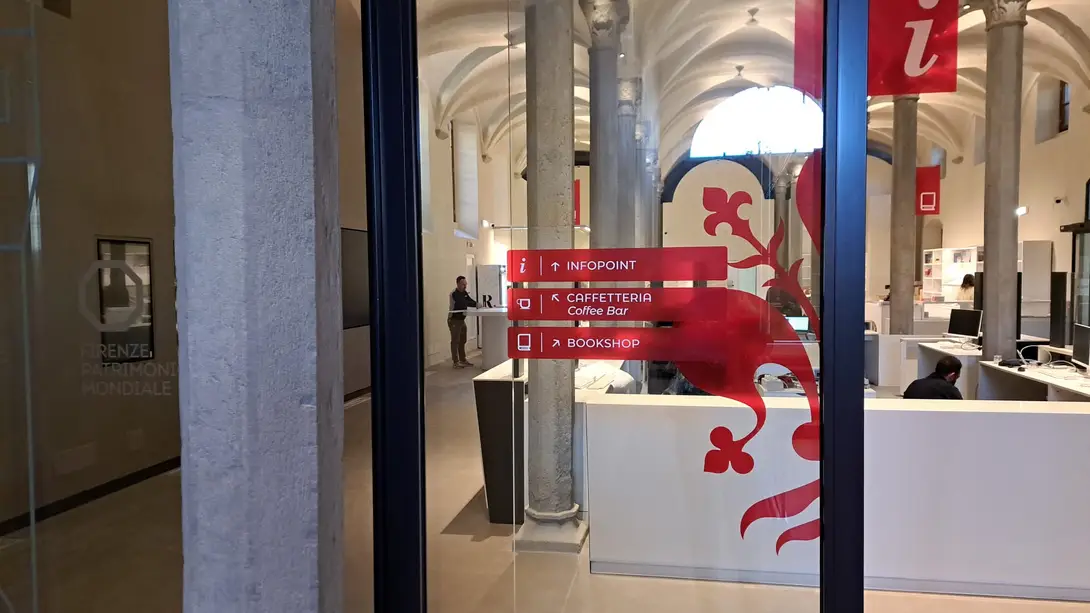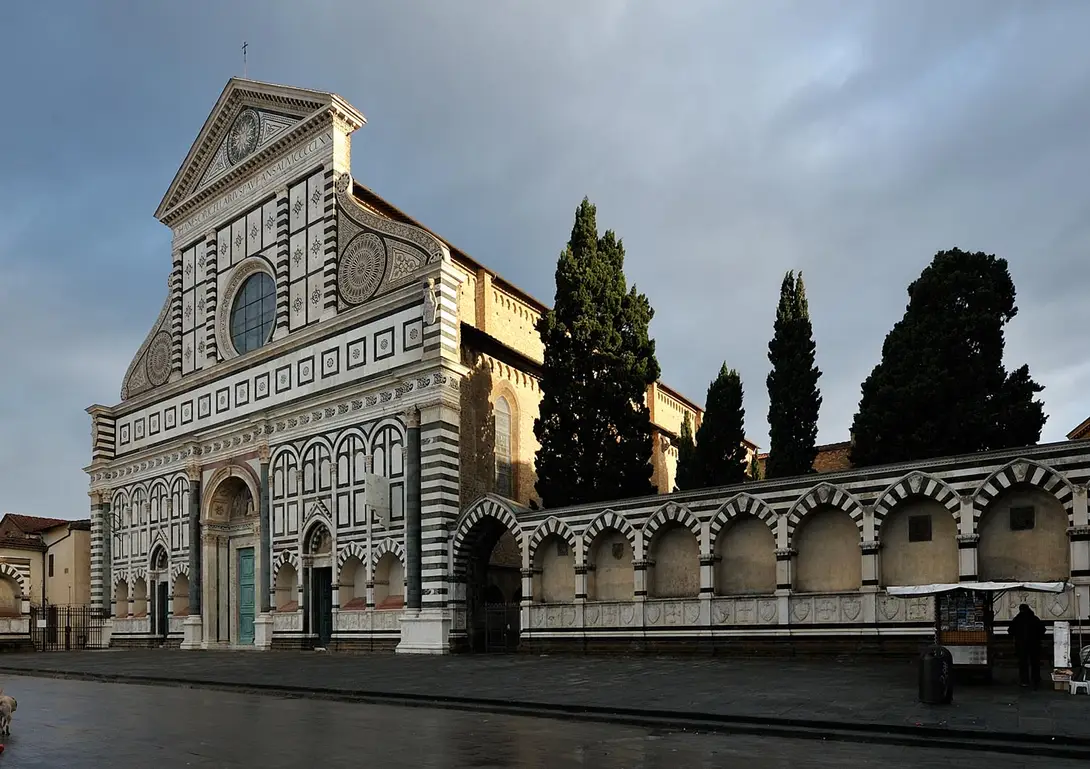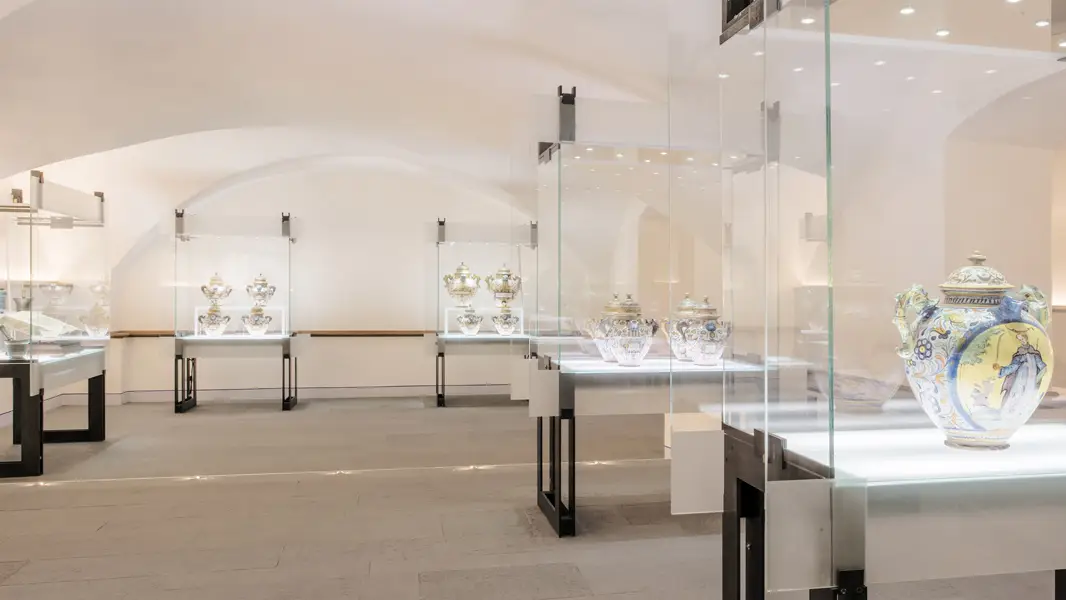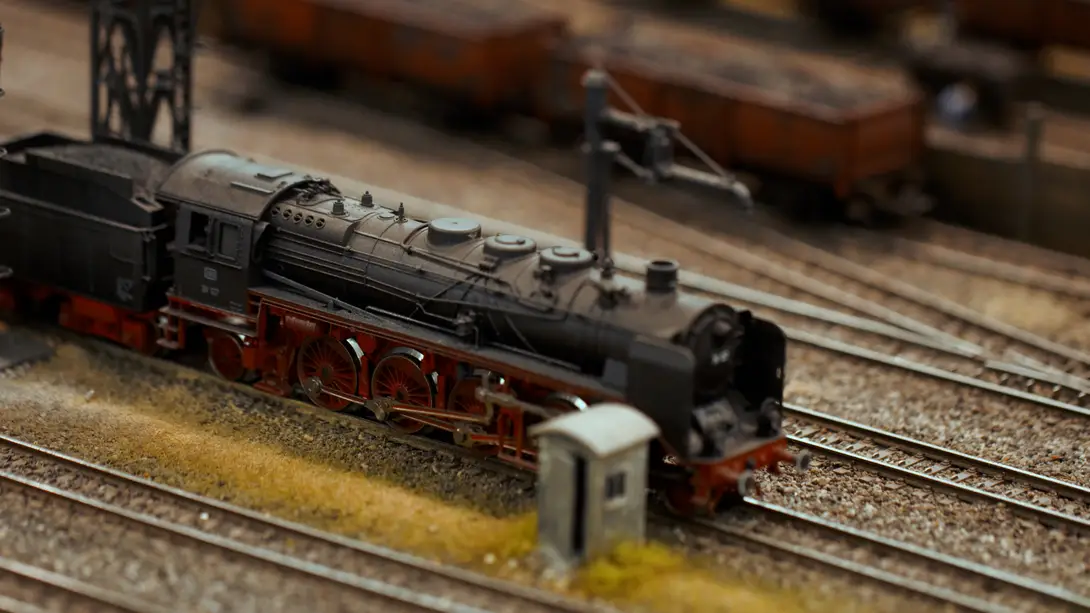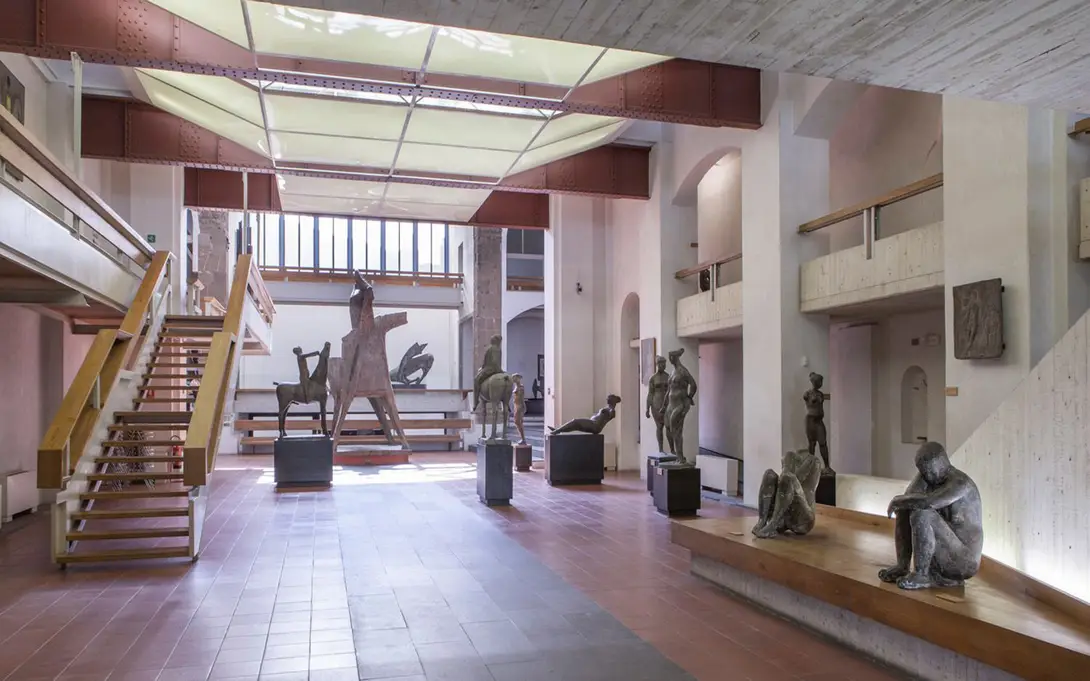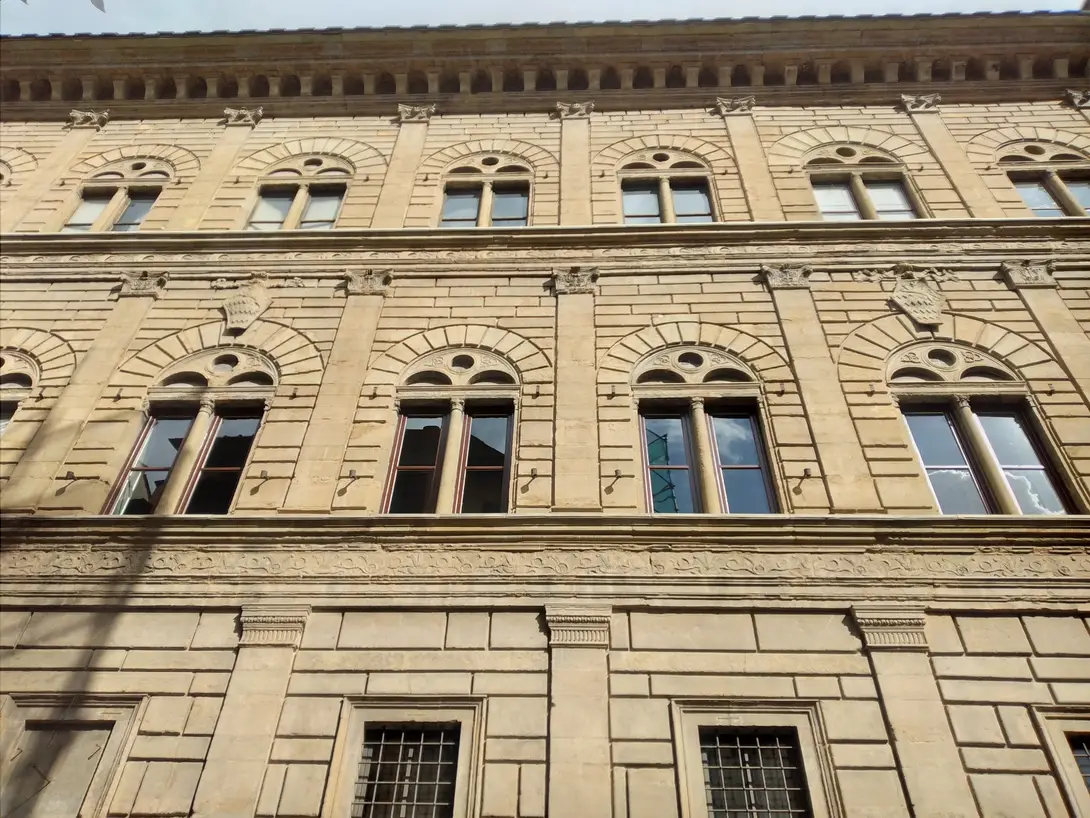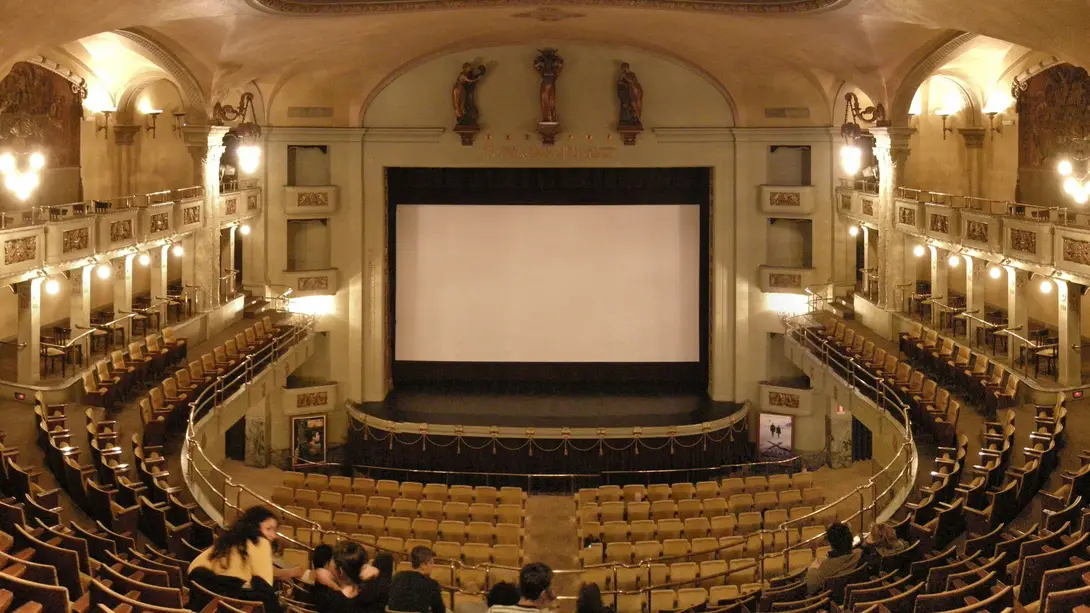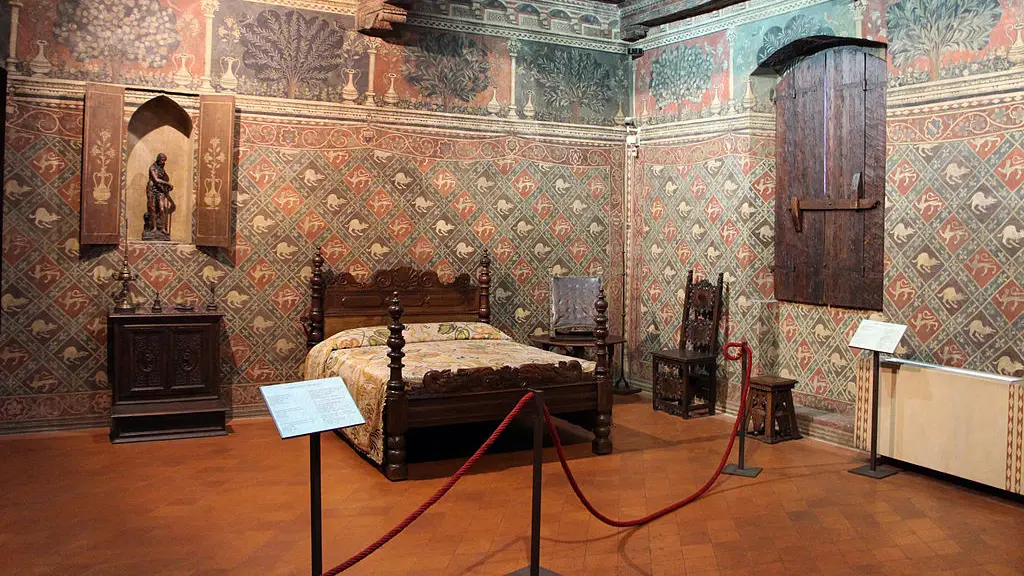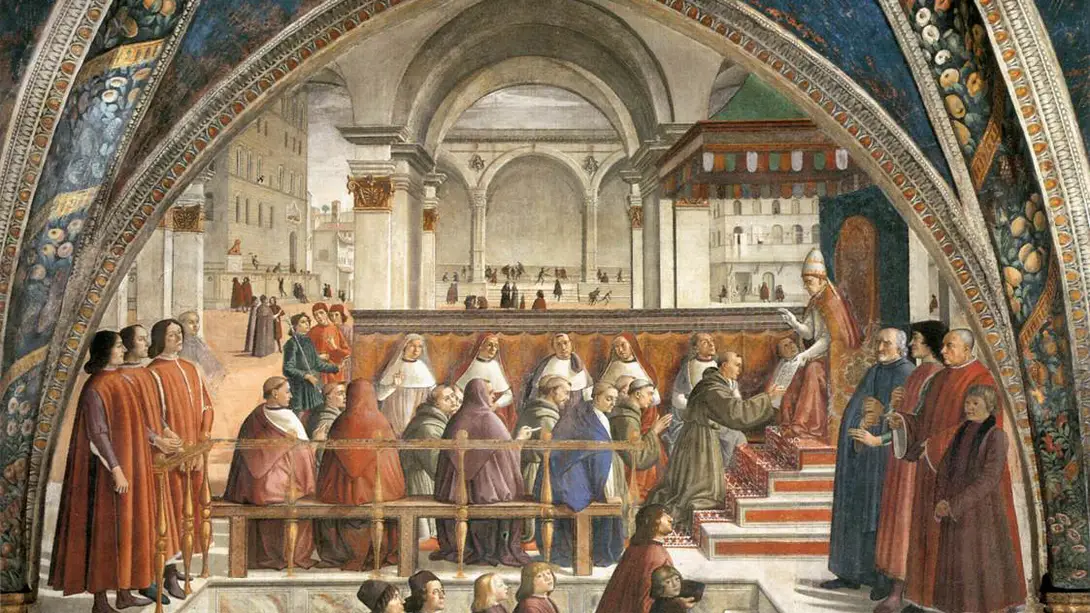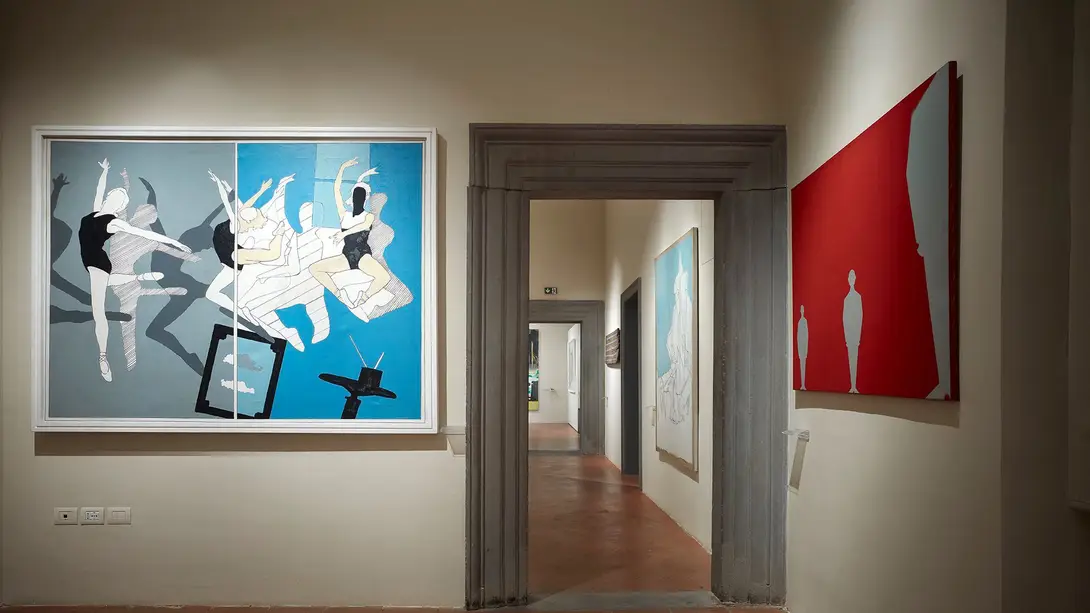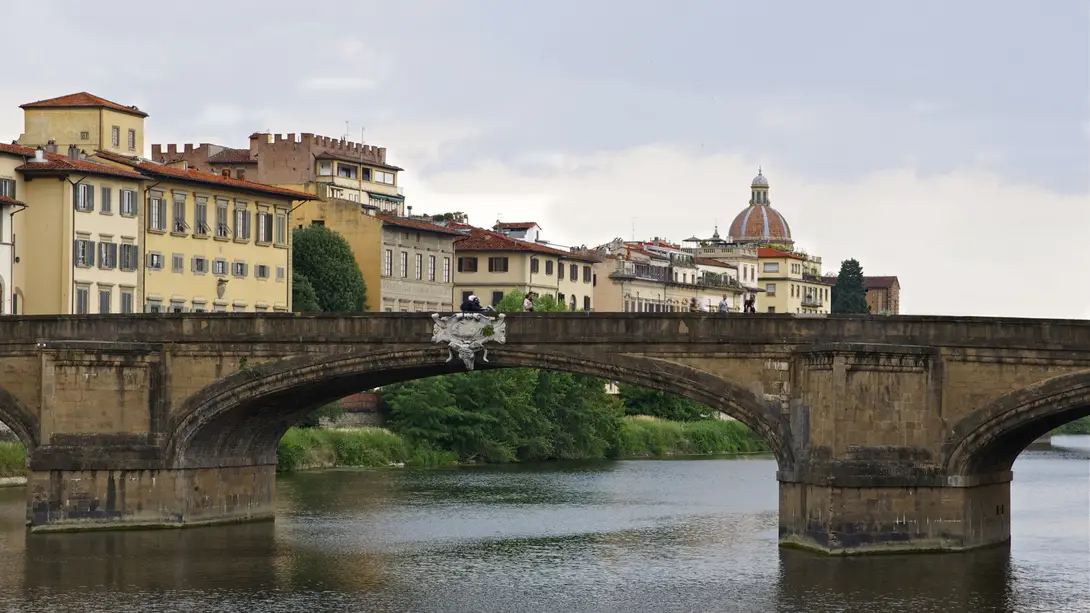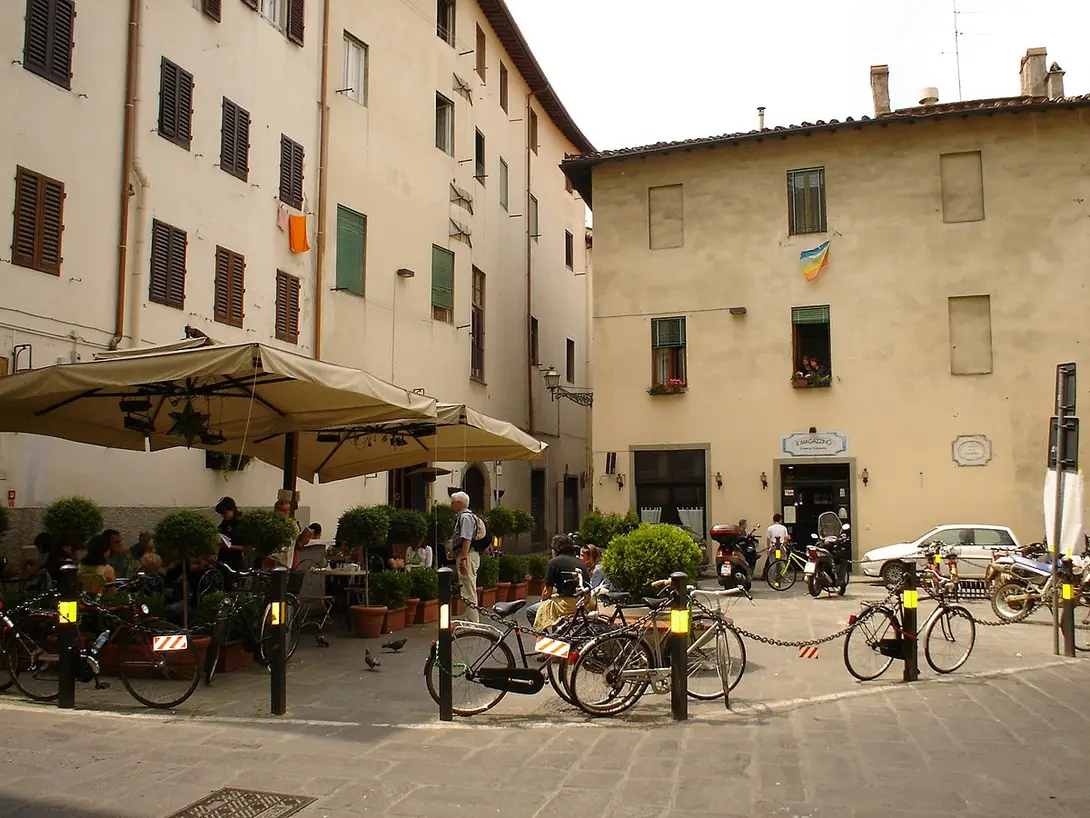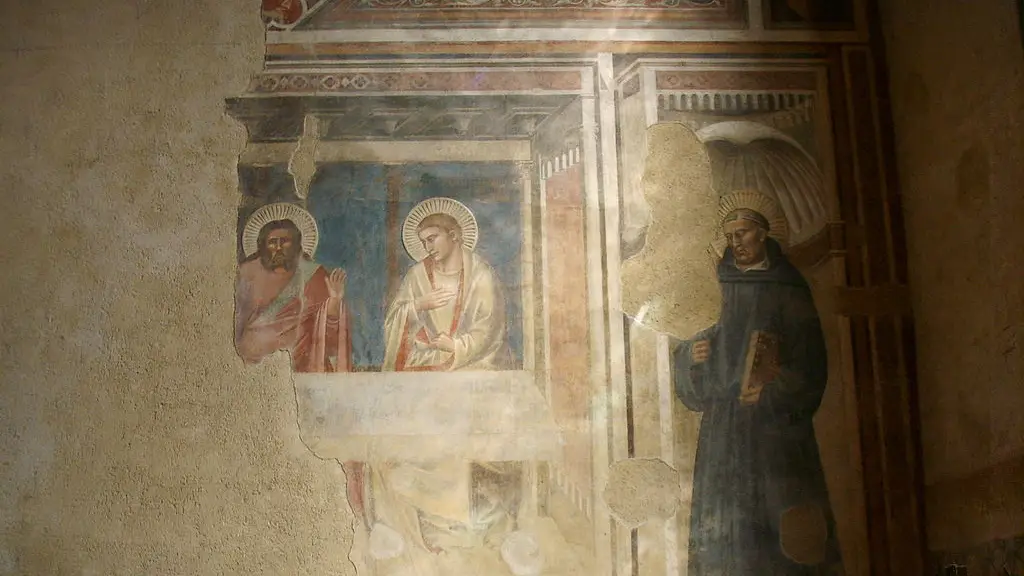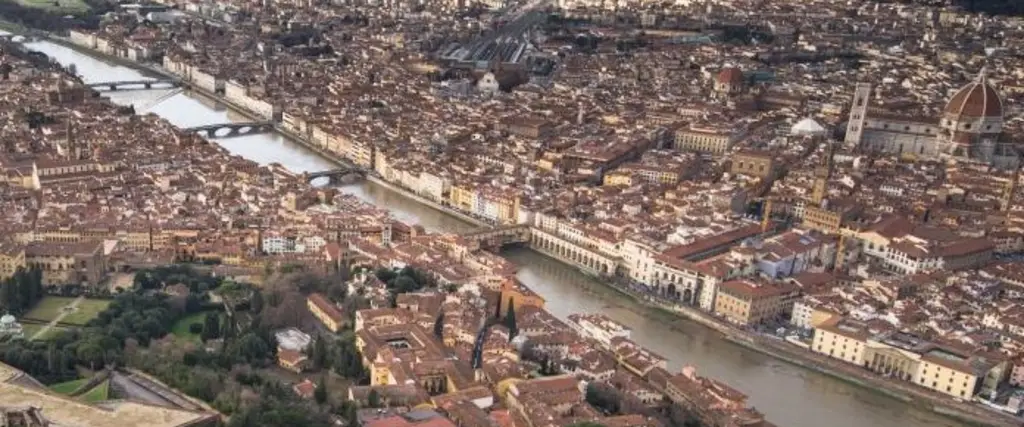
An unusual itinerary in the hearth of Florence
This itinerary will take us to discover some of the lesser-known places in the center of Florence, along an unprecedented route outside the circuits of mass tourism.
Starting right from Santa Maria Novella Station, itself an architectural masterpiece of the 20th century, we cross the square in the direction of the Santa Maria Novella Infopoint (housed in an old room of the Dominican complex). "Turning the corner," passing by Via degli Avelli, we arrive in Piazza Santa Maria Novella, where the splendid Basilica opens up, whose facade was finished by L.B. Alberti on a commission from the Rucellai family - with a slight digression on Via della Scala we reach the Officina Profumo Farmaceutica di Santa Maria Novella - ; on the left side of the Basillica facade is one of the many Florentine hotels with terraces, from the top of which we can admire a truly unique panorama of the city and its surroundings. Don't miss a visit to the Museo Novecento (a journey back through the Italian art of the last century), under the Loggia at the end of the square. Turning the corner toward Via dé Fossi, we encounter a new reality, the HZero Museum, dedicated to the world of miniature trains. Another important museum of modern art is the nearby Museo Marino Marini (among the greatest Italian sculptors of the 20th century) housed in the ancient complex of San Pancrazio: here the Rucellai family had their chapel, where Alberti's Tempietto del Santo Sepolcro can still be admired. The great architect is also credited with the design for the splendid, nearby Palazzo Rucellai, a masterpiece of Renaissance architecture, on the elegant Via della Vigna Nuova reached from Via Palchetti (where we come across one of Florence's many "little wine windows").
We continue on Via Tornabuoni, the city's most glamorous street, skirting the famous Palazzo Strozzi - don't miss a stop at the new naearby "Giunti Odeon" - heading towards Palazzo Davanzati (the Museum of the Ancient Florentine House); just a stone's throw away is Piazza Santa Trinita with three authentic "gems": the Church of Santa Trinita (with the splendid Sassetti Chapel by Ghirlandaio), the Ferragamo Museum and the Roberto Casamonti modern art collection. At No. 1 of Via Tornabuoni is one of the many "Dante's plaques" that dot the center.
We cross Ponte Santa Trinita, one of the most beautiful Florentine bridges (splendid view of Ponte Vecchio), reaching the Oltrarno, a district that has been able to preserve its identity more than others, the cradle of local craftsmanship; we take Borgo San Jacopo (at the corner with Via dello Sprone, one of the most typical fountains in Florence) characterized by some medieval tower-houses and, passing through the picturesque Piazza della Passera, we reach Via Maggio, the street of antiquarians par excellence. From here it is a moment to reach the lively Piazza Santo Spirito, to which the mixtilinear facade of the Basilica (the interior is Brunelleschi's last masterpiece.
Comune di Fiirenze
Les lieux
Étapes
Santa Maria Novella Train Station
The Santa Maria Novella train station in Florence, ideally located in the city centre, is the gateway for many travellers.
It is a terminus station, with many services and rooms inside, whose design, which replaced the first station in Florence known as the Leopolda, dates back to 1932 and was drawn up by a group of architects. The work lasted three years.
Located right in front of the Santa Maria Novella church, it is a masterpiece of Italian rationalism: the competition announced in 1932 was won by the Tuscan Group led by the architect Giovanni Michelucci and consisting of Nello Baroni, Pier Niccolò Berardi, Italo Gamberini, Sarre Guarnieri and Leonardo Lusanna. .
The large covered atrium of the station is covered in glass and steel; the ticket hall is very elegant and covered in noble materials; attention to detail was immediate with the introduction of works of art by brass Rosai, Italo Griselli, Mario Romoli and, more recently, Giampaolo Talani.
On the outside, the station stands out for its essentiality, seamlessly incorporating the colours and materials of the city. The substantially horizontal development was chosen so as not to impact on the bulk of the church of Santa Maria Novella.
Firenze Welcome Center
The new tourist information office for the city of Florence, the Area and the entire region is located in Piazza Stazione 5, in the historic but renovated premises of the Santa Maria Novella Complex.
The name Firenze Welcome Center speaks for itself: it is a gateway to the city and its territory, a large space dedicated to hospitality where professional tourist informants are present, able to direct tourists towards the must see destinations and also the secret ones of our territory.
Information materials are available to the public, video walls illustrate the various opportunities for the visitor.
The hall is also a multimedia space, open to the city, complemented by a bookshop where publications and tourist services can be purchased, and a cafeteria where a drink or snack can be enjoyed.
The Museum Complex of Santa Maria Novella has its own entrance to the side, as does the splendid Chiostro Grande
Basilica di Santa Maria Novella
The Church of Santa Maria Novella was the first of the great Florentine basilicas and the first large-scale Gothic building in the city.
Started by the Dominicans soon after 1240; it was finished in 1357 but was not consecrated until 1420.
In the following centuries it underwent various modifications, in particular the remodelling begun by Giorgio Vasari in 1566 and the 19th-century interventions designed to restore the Gothic appearance of the building.
There are a number of important artworks in the church: Giotto’s Crucifix and a wooden Crucifix by Filippo Brunelleschi, Masaccio’s fresco of the Trinity and two chapels frescoed respectively by Domenico Ghirlandaio and Filippino Lippi. The rich polychrome-marble façade was completed in the second half of the 15th century by Leon Battista Alberti.
The church is closely connected to the Florentine Rucellai family, as can be deduced from the name of Giovanni Rucellai, the munificent financier shown prominently on the façade.
Museum of the Old Pharmacy of Santa Maria Novella
In 1221 the Dominican Friars founded this workshop, where balms, ointments and pomades were prepared. A series of products, including refines perfumes and liqueurs prepared according to ancient formulas, are sold in the historical rooms.
Museo Novecento
The Museo Novecento, on piazza Santa Maria Novella in the premises of the former Leopoldine schools, is dedicated to 20th-century Italian art, presenting a selection of works from the civic collections which focuses on Italian art of the first half of the 20th century. Of great value is the Alberto Della Ragione collection, donated to the city of Florence in the aftermath of the 1966 flood, with artworks by Giorgio De Chirico, Filippo De Pisis, Gino Severini, Giorgio Morandi, Mario Mafai, Renato Guttuso, Felice Casorati among others.
The museum is completed with the exhibition of the legacy of Ottone Rosai, donated by his widow Francesca Fei and his brother Oreste to the Municipality of Florence.
The museum hosts many temporary exhibitions dedicated to contemporary artists in its ground floor rooms.
For the exhibition by American artist Haley Mellin, the courtyard was planted with around 300 native plants, based on research into the original layout and uses of the garden.
In addition to the permanent collection, the temporary exhibitions and the programme of the Cinema and Conferences Room enrich the activity of the museum with a thematic and multidisciplinary approach. Through its art mediation department the Museum daily arranges educational activities like workshops, guided tours for families, children, teenagers, adults and special audiences.
HZero - Train Museum
The Train Museum is the latest addition to the Florentine museums and is dedicated to the world of miniature trains and modelling, just a stone's throw from the central Santa Maria Novella railway station.
The heart of the museum is the 'Plastico San Giuliano' - so called by the curator, Marquis Giuseppe da San Giuliano - an immense area of 280 square metres that includes 126 trains in motion, through scenery, people, Italian and foreign landscapes, reconstructed with a truly surprising fidelity of detail. All in 1:87 scale.
A new museum space, enhanced by a model workshop, for everyone: young and adults, enthusiasts and collectors
Marino Marini Museum
The Marino Marini Museum, dedicated to the famous 20th-century Italian sculptor, is housed in the former church of San Pancrazio, where Renaissance lines are combined with modern renovation.
It is a monographic museum that houses 184 works by sculptor Marino Marini (1901-1980), arranged according to the artist's instructions in the choice of materials and natural lighting of the rooms. The works were created between 1916 and 1977. The exhibition, spread over the different levels of the church spaces, includes bronze and concrete sculptures of very different sizes, polychrome plaster casts and canvases, portraits and drawings. Exhibitions dedicated to various 20th-century and contemporary artists are periodically held in the crypt.
The Tempietto del Santo Sepolcro (Temple of the Holy Sepulchre) by Leon Battista Alberti, a Renaissance work with precious marble inlays, rich in allegorical meanings, is also on display.
Palazzo Rucellai
Palazzo Rucellai is one of the most elegant Renaissance palaces in all of Italy. The façade, designed around 1465 by Leon Battista Alberti, is a sort of illustration of his famous Treatise on Architecture (De Re Aedificaria). The combination of architectural styles and decorative elements that embellish the pietra forte façade, overlooking the elegant via della Vigna Nuova, is extremely refined.
The street bench, which runs at the base, and the upper loggia are typical of this period. It represents the first of a series of interventions that Alberti carried out, nearby, for the powerful Florentine Rucellai family: the completion of the facade of Santa Maria Novella and the Temple of the Holy Sepulcher in the Church of San Pancrazio: currently home to the Museum Marino Marini (important Italain sculptor of the 20th century).
The interior of Palazzo Rucellai cannot be visited.
Palazzo Strozzi
Palazzo Strozzi, with its imposing facades clad in pietra forte, is one of the most significant Renaissance palaces in Florence and a privileged venue for important art exhibitions.
One of the rooms on the ground floor houses a permanent exhibition that tells the story of Palazzo Strozzi. It was built in 1489 on behalf of Filippo Strozzi, one of the wealthiest merchants in Florence, who wanted it larger than Palazzo Medici. The construction remained unfinished when the Strozzi family, rebels against Medici rule, fell into disgrace in the 16th century.
The elegant courtyard, designed by Simone del Pollaiolo, is surrounded by arches resting on columns with Corinthian capitals; it is accessed through imposing portals that open in three directions (Via Tornabuoni, Via Strozzi, Piazza Strozzi).
The palace houses cultural institutions, including the National Institute for Renaissance Studies, but above all the Fondazione Palazzo Strozzi, the heart of cultural activity: in fact, the rooms are always the venue for important art exhibitions. In the spaces of the Centre for Contemporary Culture Strozzina, in the basement of the palace, initiatives dedicated to contemporary art take place.
Giunti Odeon. Bookshop and cinema
For years it was the most beautiful cinema in Florence, the Odeon Cinema, built inside the Palazzo dello Strozzino, one of the most important in the city.
Built around 1457 according to Palla Strozzi’s will and designed by Filippo Brunelleschi withMichelozzo’s undoubted intervention, the palazzo was owned by the family until the 19th century and then there were several changes in ownership. .
In 1904, it was bought by the Chiari family, who as early as 1914 at the suggestion of the great Eleonora Duse, decided to build an elegant movie theatre and the project was entrusted to Adolfo Coppedé.
In 1919, when the works had already started, the building was acquired by the Italian-American Cinema Company and was completed byMarcello Piacentini, who was a very famous architect at that time.
On the 14th of December 1922, the building was finally inaugurated.
After alternating periods as theatre and then cinema, in 2023 the Odeon, which had never lost its splendid Art Nouveau style, was renovated by the Benaim studio and reopened as the Giunti Odeon. Bookshop and cinema.
An ambitious cultural project, with bookshop space in the stalls, an unchanged gallery for film screenings in the evenings, and space for book presentations and meetings.
A café-restaurant completes the multifaceted nature of the venue.
Museo di Palazzo Davanzati
Originally built in the mid-14th century for the Davizzi family and then acquired by the Davanzati in the 15th century, the palace is an extraordinary example of a 14th-century Florentine house, with some interesting interior architecture and mural decorations with geometric motifs that were typical of the age.
Furniture, paintings, tapestries and domestic objects give a good overall picture of what an upper-class Florentine home would have been like between the 14th and 17th centuries; there are also many paintings with secular and religious themes, sculptures and a collection of ceramics and majolicas from various manufactories. There is also one of the richest lace collections in Italy, displayed in a dedicated room on the third floor.
Chiesa di Santa Trinita
The Basilica of Santa Trìnita is one of the most important in the historical and artistic evolution of the city of Florence: it overlooks the homonymous Piazza Santa Trinita and also gives its name to the nearby bridge.
Founded in the 11th century, it was enlarged and transformed around 1250, obtaining the title of abbey in the 14th century. At the end of the sixteenth century, as part of the renovations following the Counter Reformation that the Medici Grand Dukes had promoted in the Florentine churches, Bernardo Buontalenti renewed its presbytery and rebuilt the convent. The complex thus assumed a sober yet imposing style. The facade, also by Buontalenti, with sculptures by Giovanni Caccini dates back to that same period.
Inside the chapels appear rich in works of art. The most interesting is the Sassetti Chapel, completely frescoed by Ghirlandaio, with scenes from the life of San Francesco and portraits of members of the Sassetti and Medici families.
Museo Ferragamo
The Ferragamo Museum was established in 1995 by Ferragamo family, with the aim of introducing the artistic qualities of Salvatore Ferragamo, the founder of the eponymous company, and his innovations in the field of footwear. These innovations have positioned him as one of the major figures in 20th-century design and fashion.
Following the ever-evolving world of fashion, it was decided in 2006 to adopt the approach of changing the exhibition themes annually. Starting from the legacy of Salvatore Ferragamo, his creations, and the values he believed in, these themes aim to blend the past with contemporary elements. This involves integrating art, architecture, design, social history, philosophy, and science into the narrative of the museum.
Collezione Roberto Casamonti
The Roberto Casamonti Collection is located in the historic heart of Florence, at Piazza Santa Trinita 1 (Via de' Tornabuoni).
Set up on the noble floor of Palazzo Bartolini Salimbeni, the Collection is housed in a Renaissance building designed in 1520 by Baccio d’Agnolo and showcases works by the great masters of contemporary art, aiming to organize multidisciplinary exhibitions and events that enhance the dialogue between the arts.
The Casamonti exhibition is divided into two sections: the first includes works created from the early 20th century to the 1960s by artists such as Picasso, Chagall, de Chirico, Dalí, Kandinsky, Boccioni, Balla, Morandi, Burri, Fontana, and many others. The second section features works from the 1970s to the 2000s by artists of the caliber of Miró, Basquiat, Warhol, Kapoor, Kiefer, Boetti, Abramović, and many more.
Ponte Santa Trinita
The original bridge was built in1252, and it was named after the nearby church. Like all of Florence's historical bridges, it was rebuilt several times following the numerous floods of the Arno; after the terrible one of 1557, Cosimo I de' Medici commissioned its reconstruction to Bartolomeo Ammannati, who was perhaps inspired by an idea of Michelangelo Buonarroti. Made of pietra forte and decorated with commemorative epigraphs, it was considered the most elegant bridge in Florence, worthy of the grand ducal processions that used to pass over it. The statues at both ends are by Giovanni Caccini (Autumn and Summer), Taddeo Landini (Winter) and Pietro Francavilla (Spring). Destroyed by the Germans during the Second World War, it was rebuilt exactly "as it was and where it was" in 1958.
Fontana di via dello Sprone
Fontana a mascherone realizzata dal Buontalenti.
Piazza della Passera
Piazza della Passera is an open space, a very characteristic small square in the Oltrarno (the area beyond the river Arno) a stone's throw from Ponte Vecchio and Palazzo Pitti. This unusual place was the result of an opening, in the dense urban fabric of the area, during the 1920s. Originally called via del Pavoncello (the sculptural fragment of a peacock is still visible on the corner between via Toscanella and via dello Sprone), over the centuries this area was renamed with the popular nickname of Piazza della Passera, probably in relation to the existence of an ancient brothel; actually the term Passera (in English "sparrow"), in Italian is an allusion to the female organ.
In recent years this truly unique corner of Florence became pedestrian and is now animated by the numerous venues that overlook it.
Basilica di Santo Spirito
The Augustinian complex of Santo Spirito of one of the great religious and artistic monuments of 15th century Florence.
The basilica was designed by Brunelleschi and begun in 1444, but was still incomplete when he died two years later. Leonardo da Vinci and Michelangelo loved this church very much and Bernini defined it as the most beautiful church in the world. It houses various artworks: among them a Virgin with child and saints by Filippino Lippi; a special pathway is also open to the visit: it includes the Cloister of Parigi, the Refectory with the fresco of the Last Supper and the Sacristy where people can admire young Michelangelo's Crucifix.
Salvatore Romano Foundation in the Cenacolo of Santo Spirito
The museum is housed in the former Cenacolo (Refectory) of the Santo Spirito Convent (entrance on the left side of the façade).
The evocative environment, decorated with 14th-century frescoes by Andrea Orcagna (Last Supper and Crucifixion), houses numerous sculptures, from the pre-Romanesque to the Renaissance, donated by the antiquarian Salvatore Romano to the City of Florence. The collection includes works by Tino di Camaino and Donatello's assistants.
The Last Supper by Orcagna is one of the many frescoes that adorn the Cenacles of the main city orders, in this case the Augustinians, in Florence.
